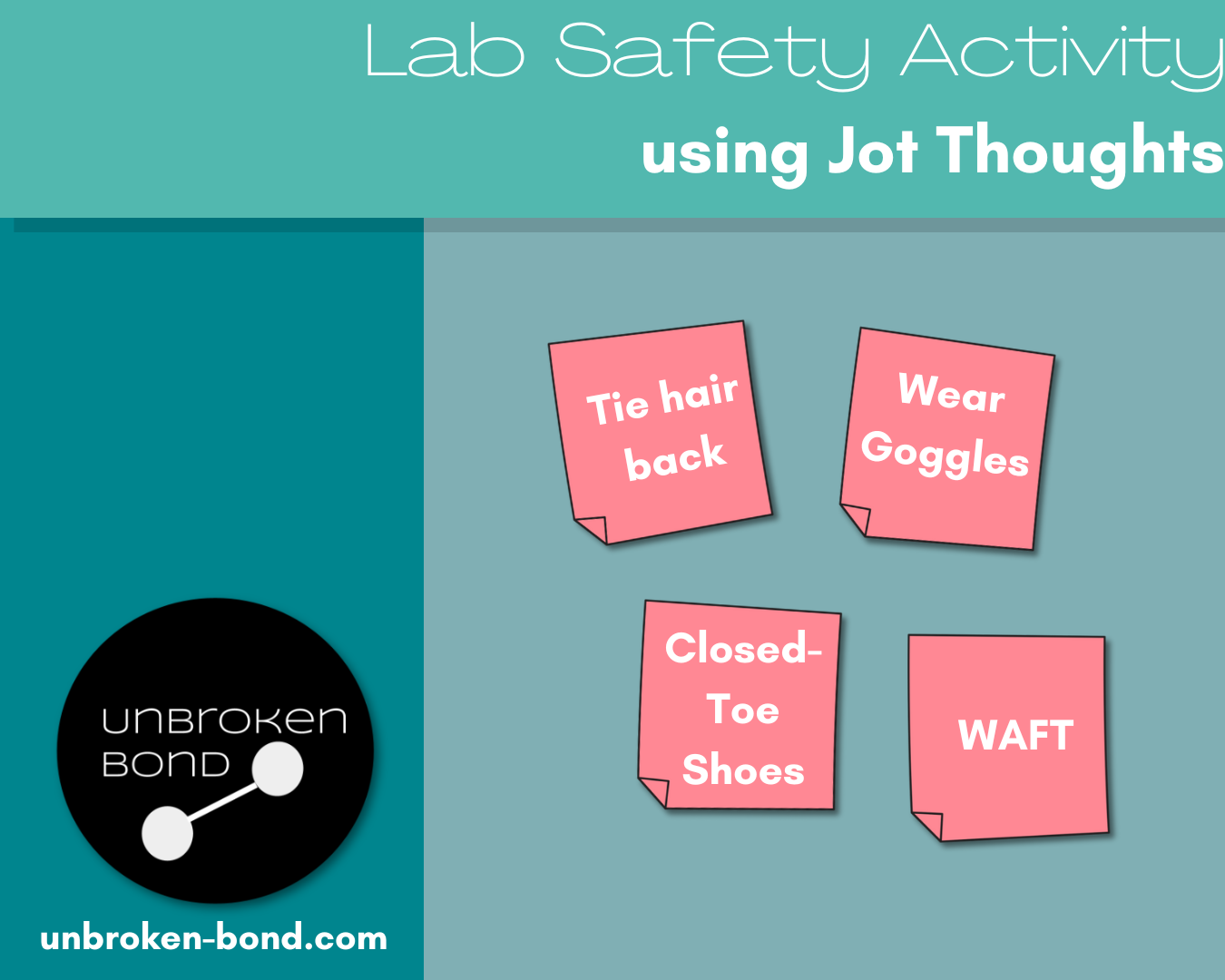4 Lab Safety Activities for Back to School
Chemistry is a lab-intensive class. Those lab safety rules are really important. But many times, chemistry classes come later in the school career of our students. And for many of our students, they have reviewed lab safety every year for many years in a row. Maybe even taken the same safety test year after year. And let’s face it…a lot of lab safety is common sense. So here are four activities for reviewing lab safety that I’ve used with my chemistry and AP Chemistry students.
Memes.
Do you know that game, What do you meme? Well, it’s easy to use with lab safety. You need a set of the memes, which you can get here. But make sure you take out any inappropriate images before you use them with your students. I take the remainder of the cards and split them up at all the tables. Students will also need post-its, or something else to write their meme caption on. Students pick out a meme of their choice, and I ask them to write a caption for it on their post-it. We then share them with the class. Since we are doing this at the beginning of the year, I ask students to:
Stand up
Say their name
Hold up their meme and read their caption
After a student shares their meme, we expand or recap as necessary.
Lab Safety Breakout Game.
If you have older students, an escape room could be great for lab safety. The students likely know a lot about lab safety, and a breakout game would be a great review. Plus, if you use other breakout games throughout the school year, a lab safety escape room would be an easy introduction to breakout games, and students should be able to be successful with lab safety. A lab safety breakout should contain activities for students to be reminded of general lab safety rules, as well as finding safety features in the classroom. If you don’t have time to make your own, try out my FREE lab safety escape room for your classroom.
Jot Thoughts.
Jot thoughts is a cooperative learning strategy. The students are grouped together, usually at a table. Each student is given a few post-its. One student starts the structure. We will usually model this one table as the rest of the class watches. I usually will say something like “I want the transition metal to start.” If you want to learn how I use element cards for these types of structures, click here. The transition metal will write down something related to science safety that we need to remember on the post-it. They will tell the table what they wrote down as they stick their post-it to the center of the table. That way the table can both see and hear the idea the transition metal wrote down. So we don’t get repeats. I will then instruct the table to move clockwise or counterclockwise. That next student will write down a new idea that we need to remember about lab safety. They too will tell the table what they wrote down as they stick to the center of the table. The rotation continues around the table. I usually try to have students go around the table at least twice, or until I notice a slow down of ideas. Then I inform tables to finish their last thought. We finish by going from table to table and sharing aloud to the class, so we can recap or expand as necessary.
Scavenger Hunts.
Scavenger hunts are great for students to find safety features in your classroom or the building. You want students to know where the eye wash station and fire extinguisher are, among others, but you don’t want to just point them out. Then a scavenger hunt might be a great option. There are a variety of ways you could set this up. There are designated scavenger hunt apps. But make sure it follows FERPA guidelines for student use if you decide to use these. Try to find one that doesn’t require students to login or put in any personal information. You could also set up a scavenger hunt using Flip, or even a Google form. Generally, students would get points for submitting a picture or doing some other task that then gets submitted. The group that finishes first would be the winner!
There you have it. Four activities for practicing lab safety content in the chemistry classroom. And none of them involve a lecture or presentation of material. It’s boring for me and the students. Not that direct instruction doesn’t have its place. It definitely does. But maybe it doesn’t have to be that way with lab safety. What activities do you use to review lab safety in your classroom? Let me know if you use any of these strategies in your chemistry classroom or if you have any other lab safety activities you love on Instagram (@unbroken_bond) by sending me a DM or tagging me in your posts. Pin the image below to revisit this post later. Happy teaching!
Affiliate Links.
Disclaimer-I make a small commission if you use these links to purchase an item at no cost to you.
FREE CHEMISTRY LAB SAFETY ESCAPE ROOM.
This chemistry lab safety escape room is FREE to email subscribers! Click here to get this escape room containing 5 puzzles about lab safety. There are also 6 different versions (red, orange, yellow, green, blue and purple) for each clue. If you have multiple boxes, or want each team to have different codes, you can have up to 6 different teams that have unique codes to unlock their locks. Instructions for set up are included. What are you waiting for? Click here to get this game for FREE!









